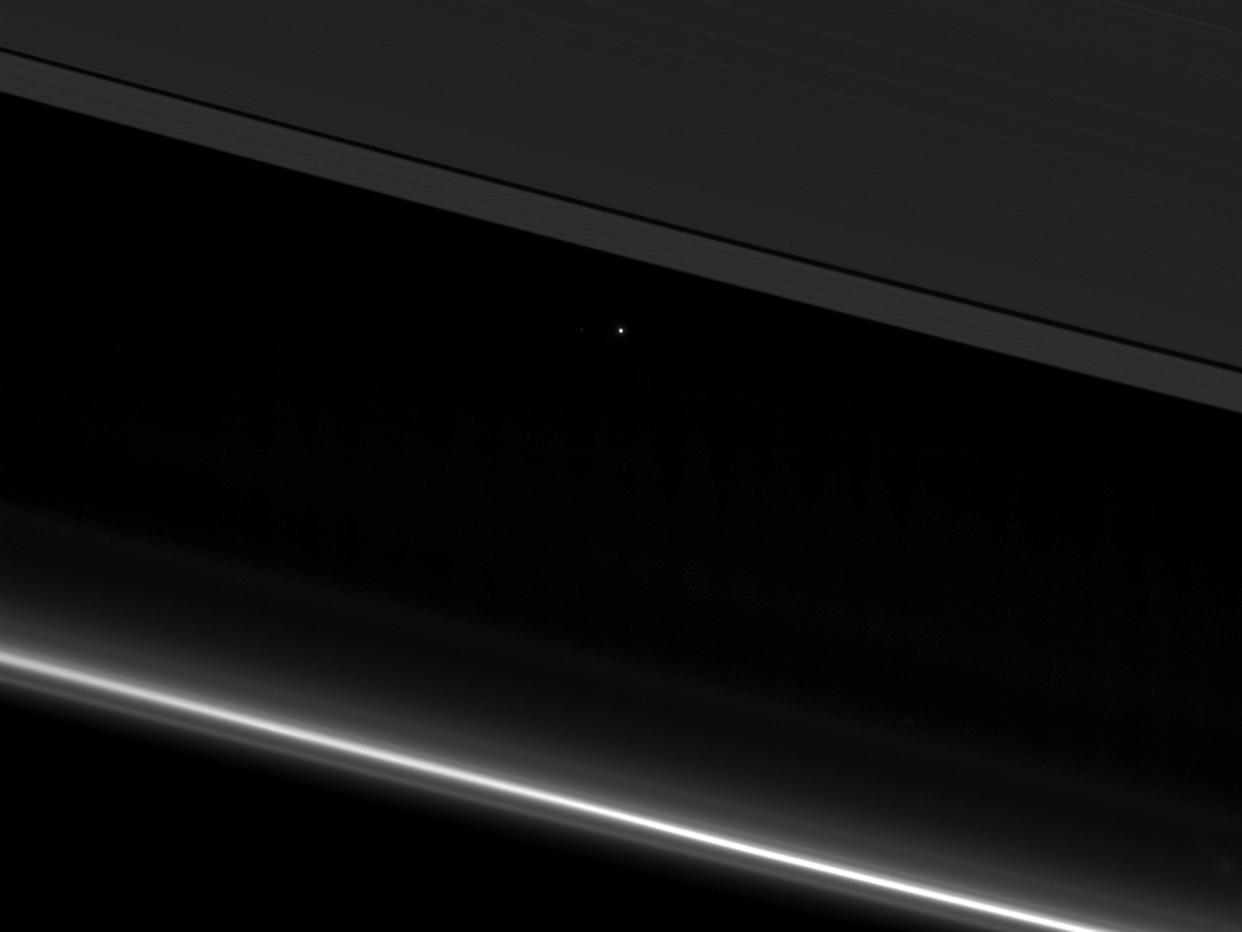Cassini spacecraft loses contact with Nasa as it dives through Saturn's rings

Nasa has lost contact with Cassini, the little spacecraft that is currently flying through Saturn's rings.
Engineers and scientists will have to wait a full day before they know whether the craft has survived the first of its 22 dives through the edges of Saturn's atmosphere, because it is now out of contact.
The dive was the first event of Cassini's "Grand Finale", which will see it fly ever closer to Saturn until it is destroyed by its own atmosphere. But each of those dives is dangerous – and might lead to damage or the destruction of the Cassini ship.
Flying so close to the rings and cloudtops of Saturn allows scientists to capture information on the planet at a level it has never done before. But it also endangers the ship as it moves around the planet.
Because of that danger – primarily a result of the fact that the ship is flying over 70,000 miles per hour as it moves through the rings – scientists are now out of contact with the ship. To try and minimise the risk, scientists pointed the large antenna that would send messages back in the direction of travel, using as a shield and leading Cassini to lose touch.
The narrow gap that it is diving through is a region no spacecraft has ever explored. So scientists took the decision to move the antenna – which is about 13 feet across – to keep it from being damaged on its first dive.
Scientists expect anything the ship encounters to be as small as a smoke particle, but made the decision as a precaution. They will look at data from the Cassini's instruments once it gets back in touch, to find out the size and density of any particles and to understand whether the same move needs to be done in the future.
It won't be back in touch with Nasa's deep space network before the very early morning of 27 April, though it might take even longer. As such, it will have been offline for more than a day.
When it does get back in touch, scientists will be able to check on the health of the craft and make sure it will be able to survive until 15 September, when it is planned to end its fatal descent.
But they'll also be able to start harvesting data from the craft. They expect to be looking through that information and imagery for years to come – continuing the Cassini craft's decade-long work of providing unprecedented amounts of knowledge about our near neighbour.

 Yahoo News
Yahoo News 
